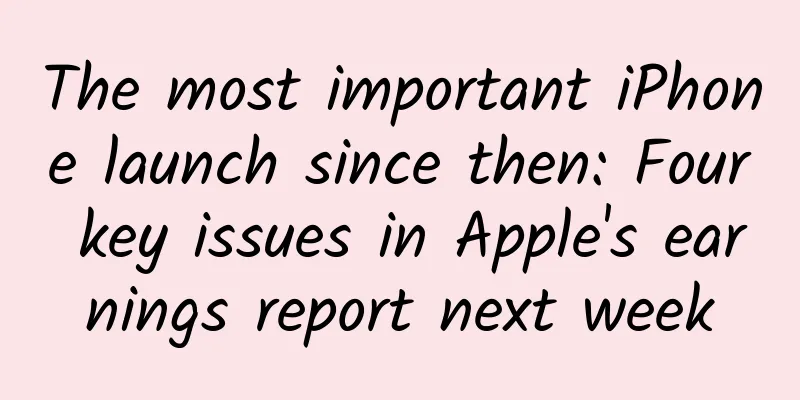Shi Jun | Amazing Chinese Plants

|
Our whole body, Our culture and society, Our kitchen has long been surrounded by plants. Every aspect of our lives today is shaped by plants. Shi Jun, PhD in Botany, well-known popular science writer Science and Technology Innovation Lecture Hall | September 28, 2021 Hello everyone, my name is Shi Jun. Today I want to tell you the story of plants. If you were asked to choose between listening to stories about animals or plants, I believe everyone would definitely choose the one about animals first. Why? Because animals give us very intuitive feelings, and they can produce very interesting changes in our hearts and create an emotional connection, because we ourselves are animals. We are not plants: we don't need to eat or drink water every day. We can just bury our feet in a flower pot when we get home, pour some water on ourselves and bask in the sun, and our stomachs will be full. But this does not mean that there are no wonderful stories or interesting sides in the world of plants. Today I want to take you to know interesting plants and the amazing Chinese plants. How do you identify plants? Completed: 10% ////////// Let's start with what botanists do. Every day when I'm online, I get asked all kinds of weird questions, 99.99% of which are: What is this? Can I eat it? Is it delicious? I was so confused. How did these things become the natural job of a botanist? Actually, this is because people don't know enough about botany. But it doesn't matter. Even if it's such a question, I will answer it well, because it is an opportunity for many friends to learn about botany. However, if you really want to know what a plant is, you must send a suitable picture. What is a suitable picture? I often open my phone and click on pictures. The text is very polite: "Teacher Shi Jun, please help us identify the name of this plant." But I almost cried when I saw that picture. Why? It's just a leaf, half of it was eaten by insects. How can I help him identify it? I have to give him a responsible answer. What should I do? I asked for help. Who should I ask for help? I asked the kid in my family for help. Maybe you already have a question in your mind: "You don't know him, can your kid know him?" I don't need him to know him, just come and help. I lifted his trouser legs, took a photo of his calves with my phone, and sent it back to the friend who asked the question, with a line of small words below: "Please help me identify this child's name." Although it sounds like a joke, the truth is here. When we look at the leaves of a plant, it is no different from looking at the hair of another person. In the future, please do not hold a leaf to ask the plant teacher what kind of plant it is. It is like holding a tuft of leg hair and asking someone: Have you seen this person? But at this point, everyone may have a question: What should we look at if not the leaves? Look at the flowers of the plants. You must look at the flowers of the plants, because the flowers are the face of the plants. When you want to recognize a plant, you must first look at its flowers. Someone may come out to argue, saying that there is a place where many plants do not bloom, but I know them all. I asked, how can you be so good at it, where is that place? He said, in the vegetable market. It seems to make sense. Many vegetables in the vegetable market do not bloom, including Chinese cabbage, celery, and watercress, and we did not buy the wrong ones. Here comes the question. Looking at the plants in the pictures below, can you tell which they are? Can you pick out the big radish in these pictures? ▲Who is the “big carrot”? Which one is a radish? They all look like radishes, but none of them are actually radishes. They have nothing to do with radishes. So what are they? Let's look at the four pictures on the left. They actually have a common name, beet, which is a plant used to make sugar. The two plants on the upper and lower right are called turnips, which were very important vegetables for Chinese people before potatoes entered China. The one in the middle on the right is kohlrabi. They are not radishes, but they all look like radishes. Why is that? In fact, humans have domesticated plants into this shape in the long-term breeding process. At this point, you may think that humans are so powerful that they can make plants grow any way they want. But is it really so? Today, we claim to be the spirit of all things. Can we really control everything? But if you think about it carefully, you will find that our entire body, our culture, society, and our kitchens have long been defined by plants. Even every aspect of our lives today is shaped by plants. Some people may think that I am a botany teacher and I am just bragging. Well, after listening to the following story, everyone will have their own judgment. Have we modified plants? Completed: 30% ////////// Plants shape our behavior more than we think. I believe that many people, after a certain age, have a special tooth that starts to cause trouble: wisdom teeth. Why is it called wisdom tooth? What does it have to do with wisdom? This is because our ancestors needed this tooth a long time ago, and this tooth grew out at around 30 years old, when people already had a lot of survival wisdom. It grew out at this time, so it is called wisdom tooth. But wisdom teeth are obviously very annoying and painful teeth, so why do they have a respectable and beautiful name? ▲ Human ancestors were vegetarians Because human ancestors really relied on this tooth, or rather, this series of teeth, in their survival. When our ancestors lived on the African savannah, they did not have such good food as today. In most cases, the main food was grass and tree roots. A little better, it was plant seeds and fruits. Plant fruits and seeds were a little better, but chewing grass roots every day would wear out your teeth, and you had to eat a lot every day. Our closest relatives, chimpanzees, have a diet of about 70% plant-based food. Another close relative, gorillas, are almost entirely vegetarians. Their main job every day is to eat, grabbing a handful of leaves and stuffing them into their mouths. They cannot digest them without chewing them, so this behavior wears out their teeth greatly. Human ancestors ate these hard foods and did not pay attention to oral hygiene. By the time they were in their twenties or thirties, all of their front teeth had fallen out. How can you survive and eat without tools? Wisdom teeth are very important auxiliary tools that help people survive better. However, later, humans invented cooking utensils that can grind seeds and various hard ingredients; they also invented fire to make ingredients soft and easy to absorb. ▲ New problems brought by human delicacies: chimpanzees do not remove wisdom teeth But today, wisdom teeth have become a burden and trouble for us. You can see it from the comparison in the above picture. Because of eating a lot of soft food, the human jaw has become smaller and smaller. Compared with apes, the space for human teeth is very limited. If wisdom teeth grow out at this time, it will cause trouble, and even have to go to the dentist. So in a sense, the work of dentists today was even arranged by plants a long time ago. Cooking skills were originally taught by a plant teacher Completed: 40% ////////// After talking about wisdom teeth, let's focus on more amazing Chinese plants. I believe everyone has eaten tofu. It can be said to be the most representative ingredient in Chinese cuisine. Even the English name of tofu is tofu. Why do Chinese people love to eat such ingredients so much? What kind of plants is tofu made of? There is no doubt that the raw material of tofu is soybean. It is also the most famous bean among the five grains of rice, millet, sorghum, wheat and beans. The other four of the five grains are members of the grass family. The main nutrients they provide are carbohydrates, but soybeans can provide a very important nutrient, that is, protein. Is protein important? Of course it is. You can touch the back of your hands, hair and cheeks. Everything you touch is protein. More importantly, protein is an important substance that makes up the brain. What will happen to us if we lack protein? Without protein, will we become skeletons or skeletons? The answer is that we can't even become skeletons, because bones need a lot of protein to grow. ▲ Why eat soybeans? It seems that protein is a very important nutrient. And in the long history of human development, protein has indeed highlighted its importance. We can see from the picture below that when different ancient civilizations originated or flourished, they all had special protein supply support. There are camels in North Africa, cattle in West Asia, and alpacas in South America; and in China, what is the main food that supplies protein? It is soybeans. ▲ Protein is the guarantee for the rise of a great power! At this point, a new problem arises. Before the Qin and Han Dynasties, the way to eat soybeans was similar to the way we steam rice today. After the beans were cooked, they were served directly in a large bowl. Eating in this way will bring a troublesome thing. I believe that after eating a lot of soybeans or edamame, everyone will have the embarrassing plot shown in the following picture. Of course, this picture is obviously posed, because he is standing on a drilling platform with a natural gas flame behind him. However, the gas produced after we eat too much soybeans is really the same as the main component of natural gas: methane. Where does this methane come from? Will the beans explode if you eat them? Of course not. The methane comes from a special chemical component in soybeans: soybean polysaccharides. The name sounds sweet, but it is not sweet at all, and after eating it, the digestive tract and stomach are completely unable to digest and absorb it. Who can deal with them? The active microorganisms in the intestines can. They like soybean polysaccharides very much and think they are very delicious. After eating, they will produce some waste gas, which is methane. When people eat a lot of edamame, the soybean polysaccharides in these edamame are decomposed by microorganisms to produce methane, and your stomach will swell up. These gases become various embarrassing noises. The embarrassing noise is a minor issue. The most troublesome thing is to get a lot of protein from soybeans, but the stomach is bloated and painful every day, so we hardworking and brave Chinese people have invented a very useful cooking method: make soybeans into tofu. How can this avoid bloating? Because the basic process of making tofu is to soak the soybeans, grind them into soy milk, add brine to it, and make tofu pudding. Scoop it into a mold, then use a heavy stone to press it, remove as much water as possible, and the rest is tofu. Does this have anything to do with removing soy polysaccharides? Yes. A large amount of soy polysaccharides are dissolved in the water that flows out, and the soy polysaccharides are removed when the tofu is pressed into shape. Isn't this a smart approach? Later, many chefs and working people found a better way to deal with soybean polysaccharides: turning tofu into stinky tofu. Stinky tofu grows hair, which is actually the process of fungal growth. This process will decompose a large amount of soybean polysaccharides, so you don't have to worry about bloating when eating stinky tofu. Today, tofu or stinky tofu that seem to be made for the pursuit of deliciousness are actually ideas taught to us by plant teachers. Are the shapes of Chinese characters also shaped by plants? Completed: 60% ////////// The influence of plants on us is not simply in eating or cooking, but has long been infiltrated into Chinese culture. If you look up a Xinhua Dictionary, you will find that many characters have radicals related to plants. For example, there are far more characters with the wood radical than with the gold radical or the stone radical. How many characters are there with the wood radical? 1,020. In addition, there are some more special plants, such as bamboo. There are as many as 365 characters with the bamboo radical as the radical. How much influence does bamboo have on us? Bamboo shoots are used in cooking, and chopsticks are also made of bamboo. But don’t think that bamboo is only related to the dining table. It has a much greater influence on us, and even shaped the image of Chinese characters today. If we examine many different types of writing today, you will find that their shapes are completely different. The Chinese are proud of the image of square characters, but there are many different characters in the world. They may be long and have different writing directions and their own special arrangement forms. ▲ Dai language: palm leaf scriptures The above picture was taken by me in the Rainforest Museum of Xishuangbanna Tropical Botanical Garden of the Chinese Academy of Sciences. Its name is palm leaf. Local people use processed palm leaf leaves as materials for writing scriptures. The picture above is engraved with Dai language. Its word structure is long and the writing direction is from left to right and from top to bottom. But if you look at ancient Chinese books, you will find that all the writing directions are arranged in a row from top to bottom, and then from right to left. Why is it so? Because the plant material we originally used to write Chinese characters was bamboo slips, and bamboo slips are long, so they can only be written from top to bottom. And after the bamboo slips were compiled into a book, in order to make it easy to open, you naturally read the words on the right first, and then slowly unfold it, which constituted the original order of Chinese characters. Of course, many changes have taken place today, but that is another story. ▲ Materials for writing Chinese characters: bamboo slips and wooden tablets Regarding the origin of Chinese characters, I believe you have read that the earliest Chinese characters were written on tortoise shells, so they were called oracle bone inscriptions. But today, many scholars believe that our ancestors had already written Chinese characters on bamboo slips at that time, because the order of writing on oracle bone inscriptions is very similar to that on bamboo slips. Therefore, plants are actually an important carrier that determines the image of Chinese characters. It is plants that teach us unity Completed: 80% ////////// Not only are our dining tables and writing influenced by plants, but our national spirit is also related to plants. We Chinese are very united, and unity is an important national spirit, which is precisely related to the plants that grow on Chinese soil. When agriculture was first developed, the Yellow River and Yangtze River basins were both planted with important crops that grew locally. Millet was planted in the Yellow River basin, and rice was planted in the Yangtze River basin. These two crops united the Chinese people. Here we need to mention China's climate. Both the Yangtze River and Yellow River basins have a typical monsoon climate, with distinct dry and rainy seasons in a year: less water in the dry season and more water in the rainy season. This will be a very big problem in terms of food production. ▲ Crop demand and monsoon climate In the Yellow River Basin, what should we do if the rainy season has not come yet when millet needs water the most in late spring? In the Yangtze River Basin, the rice is ripe every year when local floods are prevalent. What should we do if all the rice fields are washed away? The solution is to build water conservancy facilities. The amazing water conservancy projects such as ditches, dams and even Dujiangyan are built to solve various water problems when planting crops that year. However, such projects require many, many people to come together to ensure the normal operation of water conservancy projects; and the same thing needs to be done every year, every decade, every hundred years, and every thousand years, which truly unites us Chinese. ▲ Agricultural needs: water conservancy projects From these stories, you can feel that the influence of Chinese plants on us Chinese is much greater than we imagine. Plants have never been dull and boring creatures. Plants can give us much more than we imagine. Many people have asked me: What is the biggest impact of studying botany on you? I said that the biggest impact on me is probably that it gave me a doctorate. Of course, this is a joke. The real impact is that learning about plants has allowed me to learn to coexist peacefully with the whole world and let me truly understand myself. Many people may think, don't I know myself? I know my name, where I live, what I like to eat, all of these are very clear. No, it's not as simple as you think. What I mean by knowing myself is to find out what I am best at and what I am most suitable for, and to truly find my own happiness. What does this have to do with plants? Of course it has something to do with them. ▲ Life is neither high nor low In the picture above, you can see two completely different plants, the moss growing in the cracks of floor tiles, and the 106-meter-tall coast redwood. When these two plants appear at the same time, everyone may have their own judgments in their hearts, thinking that the moss is too small and it is low-level; the coast redwood is so tall, of course it is high-level. It must grow as tall as the coast redwood and pursue a peak. But have you ever thought, if you put the coast redwood in the cracks of floor tiles, can it grow well? Moss, on the other hand, can not only grow well in the cracks of floor tiles and next to the drainage ditch, but can even provide a good hotbed for the germination of many plant seeds. In these places, isn't moss important? There is no such thing as high or low life in this world. Everyone is seeking the most suitable survival path and environment for themselves. This is exactly the best life enlightenment that plants give us. Just like everyone, we also need to find the most suitable place for ourselves to exert the energy we should exert. I also hope that everyone can learn more about plants through today's story, and through understanding plants, we can know more about ourselves, find the most suitable path and position for ourselves one day earlier, and find the happiness that everyone deserves. My speech is over, thank you everyone! - END - The articles and speeches only represent the author’s views and do not represent the position of the Gezhi Lundao Forum. Formerly known as "SELF Gezhi Lundao", it is a scientific and cultural forum launched by the Chinese Academy of Sciences, co-sponsored by the Computer Network Information Center of the Chinese Academy of Sciences and the Bureau of Science Communication of the Chinese Academy of Sciences, and hosted by China Science Popularization Expo. It is committed to the cross-border dissemination of extraordinary ideas, aiming to explore the development of science and technology, education, life, and the future in the spirit of "investigating things to gain knowledge". Welcome to follow the official website of Gezhi Lundao: self.org.cn, WeChat public account: SELFtalks, Weibo: Gezhi Lundao Forum. |
<<: What would happen if the “Tiangong Classroom” was moved to Earth? The result of our work is…
Recommend
Price inquiry for customized Yueyang decoration mini program. How much does customized Yueyang decoration mini program cost?
In order to better penetrate into various industr...
Give technical staff some non-technical advice
[[233659]] I have been working in IT for many yea...
A rare thousand-year-old oak tree was found in Henan! Was it planted by a famous general of the Sui and Tang dynasties?
"It is rare to find two thousand-year-old pr...
JD Cloud Wireless Bao Baili Review: A 600-yuan router that is fast, stable, and profitable
There are so many AX6000 series routers on the ma...
How much does it cost to develop a Chaohu children's clothing mini program? What is the price for customizing Chaohu children's clothing through the mini program?
Is it easy to be an agent of Chaohu children'...
How to become a good copywriter? First of all, you must learn to grasp the best selling point!
If you were asked to write copy for a product now...
It has a humanoid shape but can't stand straight! What's wrong with humanoid robots?
Why can't common humanoid robots stand uprigh...
A thoughtful iOS development specification
Preface Although it is called a preface, it is ac...
Download Douyin Live Streaming Crash Course Baidu Cloud
Download Douyin Live Streaming Crash Course Baidu...
Why does Yuan Longping, who has won numerous awards, value foreign awards more?
Editor’s Note: During the 100-year struggle of th...
How much does it cost for a Shantou merchant to create an appointment registration app?
According to industry insiders, mini programs wil...
A tablet worth 10,000 yuan was mislabeled as a tablet worth 1,000 yuan. The e-commerce company refused to admit it and angrily sued the buyer.
A super tablet computer originally priced at 14,5...
3 ways to increase user traffic!
User growth has always been a key to business ope...
The world after the A station crash: What’s the point of calling it a subculture if there’s no fighting?
At 13:33 on the afternoon of August 4, AcFun, the...
Tencent Animation User Operation Growth Analysis Plan: From 5 million to 30 million DAU!
In order to apply for the Tencent Animation proje...









